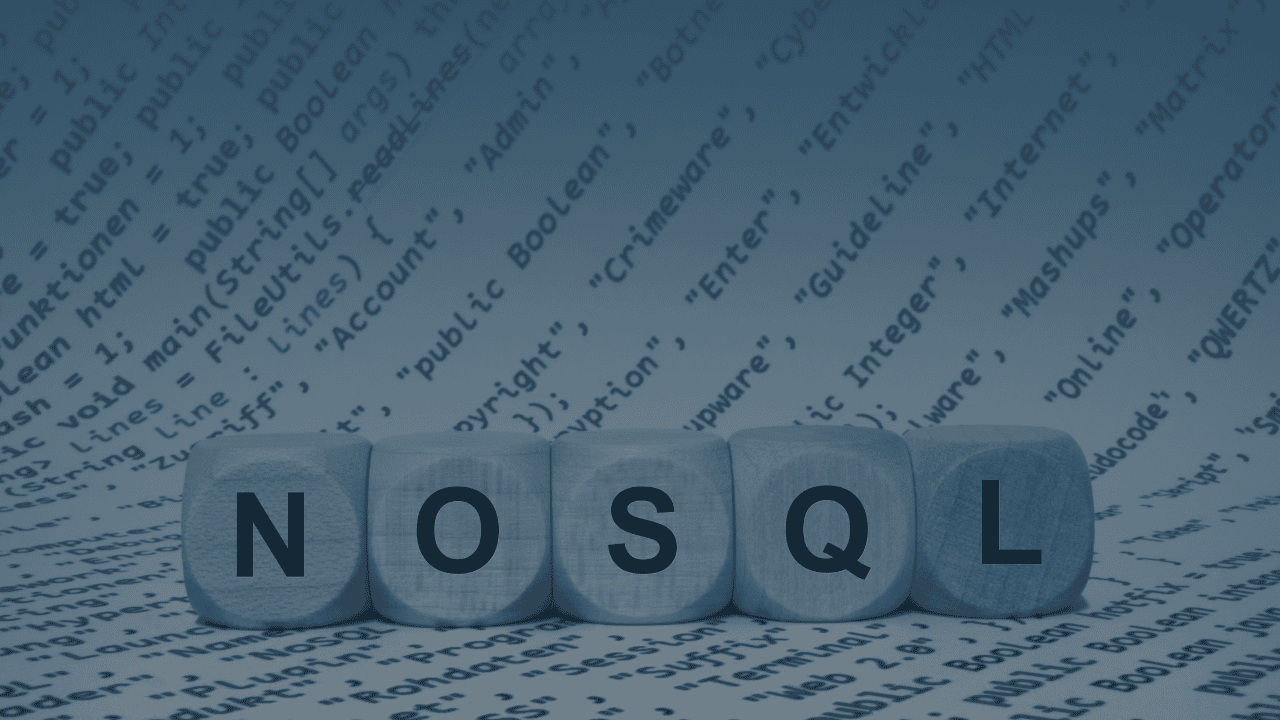NoSQL databases
Definition, overview & context
As part of our blog series on database technologies, this article deals with NoSQL databases. We focus on the challenges and diversity that NoSQL databases bring with them. Scalability, flexibility and the ability to handle disorganized data as well as NoSQL in the context of big data are the main pillars of this article.
NoSQL databases are an important driver of versatility and efficiency in this context. Discover their advantages and limitations as well as trends and opportunities together with us.
DEVELOPMENT AND BACKGROUND OF NOSQL DATABASES
Faced with the challenges of rapid data growth and the associated increase in diversity, NoSQL databases emerged as an answer to these limitations.
Conventional relational databases are increasingly being pushed to their limits here, which is why an alternative is essential. The focus of NoSQL is fundamentally on scalability, flexibility and the ability to handle unstructured data, which makes it particularly suitable for modern applications and big data analysis [1].
They are therefore increasingly being used in real-time web applications, as they can store data in an unstructured form without following a fixed schema and also support high-capacity distributed data storage [7].
DIFFERENTIATION BETWEEN NOSQL AND RELATION
In contrast to relational databases, NoSQL databases offer a more flexible approach to data management. They do not adhere to a tabular structure and are designed to process semi-structured or unstructured data efficiently. This flexibility not only enables agile data modeling, but also a faster response to changing requirements, which contrasts with the strict structure of relational databases. They are therefore ideal for scaling, as they can dispense with relational assignments or limitations regarding the dynamic distribution of data. They also enable interaction without complex query languages [7][10].
NoSQL databases, an acronym for “Not Only SQL”, are characterized by their versatility and efficiency in clusters. They are mostly open source and developed for the needs of modern websites. A key feature is its support for different data models, in particular the key-value memory, which enables simple and fast data retrieval. These databases are therefore well suited for applications that require fast development cycles, extensive data acquisition and real-time analyses. Possible scenarios include e-commerce platforms, IoT data storage and content management systems [12].
CATEGORIES OF NOSQL DATABASES
Within the NoSQL database types, the following categories are identified, each of which is optimized for specific application needs and together expand the flexibility of the NoSQL concept [1][10]:
Key-value stores: are characterized by simplicity and flexibility and are particularly suitable for applications that require fast data access
Column-Family Stores: Ideal for applications that need to store and retrieve large amounts of data without sacrificing performance
Document Stores: Well suited for applications with varying or evolving data structures, making them a popular tool for content management, e-commerce and more
Search Engine Databases: Optimal for full-text search and real-time analyses
Time Series Databases: Specially developed for the processing of time series data, such as IoT and financial data
IN-DEPTH STUDY USING THE EXAMPLE OF MONGODB AS A DOCUMENT-BASED DATABASE
Document databases mark a key innovation within NoSQL technologies by providing a specialized organizational structure for storing and retrieving data in JSON-like documents. This structure allows far-reaching flexibility in data modeling and management, which enables data structures to be changed quickly without having to define a rigid schema in advance. Their natural compatibility with web applications makes them the preferred choice for the development of dynamic websites and large-scale online platforms by enabling seamless and efficient integration into modern development environments [24].
MongoDB – This is made possible by a schemaless architecture and simple horizontal scaling by means of sharding. Sharding means reducing the load on individual servers by adequately distributing the data traffic [25], which is particularly essential for real-time applications and complex web applications. MongoDB’s data partitioning, fault tolerance and efficient data retrieval capabilities position it as a robust solution for demanding data processing requirements [1][19].
In addition, MongoDB has proven itself in specific industry applications, especially in the financial sector, with customized solutions for challenges such as fraud prevention, open banking and core banking. By integrating machine learning, MongoDB enables, for example, improved fraud prevention through real-time analysis of transaction data.
In the area of open banking, MongoDB supports financial institutions in the use of data protocols in order to fully exploit the potential of the open banking ecosystem. For core banking systems, MongoDB provides the flexibility and scalability needed to quickly implement new features and operate efficiently on multiple platforms, increasing market agility and reducing overall costs [20][22][23].
FLEXIBLE STRUCTURES, SCALABILITY AND PERFORMANCE
The use of flexible BSON documents allows MongoDB to customize the data fields per document, which offers a high degree of flexibility in data storage. This flexibility is complemented by the ability to define schema validation rules, which ensures the integrity and consistency of data in dynamic application scenarios. These features make MongoDB particularly effective in environments that require agile data modeling and the ability to quickly adapt to changing data requirements [13][14].
In terms of scalability and performance, MongoDB offers robust solutions for handling large amounts of data by scaling horizontally, i.e. distributing data across multiple nodes to maximize efficiency and performance. Functions such as high availability minimize downtimes and ensure reliability even under high loads. Optimization strategies, including indexing and caching, contribute significantly to increasing performance and support applicability in performance-intensive, data-driven applications [4][15][16][17].
ADVANTAGES
The previous explanations make it clear that NoSQL databases offer the advantage of processing large amounts of data through horizontal scaling across multiple servers. Their flexibility enables agile and rapid adaptation to changing data structures. The efficient handling of structureless data is an outstanding advantage that makes it suitable for modern applications. In addition, features such as fault tolerance and data partitioning contribute to robust and reliable performance [1][4][6].
LIMITATIONS
However, there are still disadvantages associated with NoSQL databases. Users who are familiar with relational databases may require an adaptation phase, as query languages and data models in NoSQL databases diverge accordingly. In addition, compromises in consistency may occur, possibly leading to later rather than immediate consistency. Organizations considering a switch must carefully consider these trade-offs to ensure compatibility with their specific use cases [1][6].




